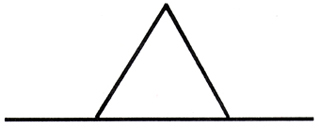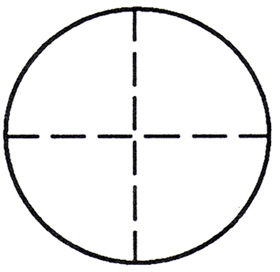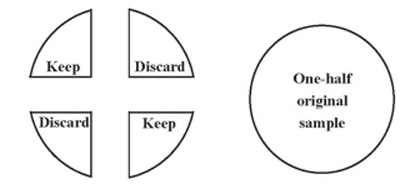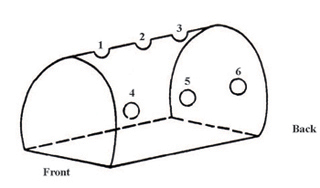G331
Sampling Feeds for Analyses
Sampling is the key to accurate feed analyses and properly balancing livestock rations. Here’s how to do it.
Bruce Anderson, Extension Forage Specialist
Terry Mader, Extension Livestock Specialist
Paul Kononoff, Dairy Nutrition Specialist
Accurate feed analyses are needed to balance livestock rations, correctly price hay, formulate least cost supplements, and efficiently allocate homegrown feeds to the proper class of livestock. Sampling is the most important factor affecting accuracy of feed analyses.
The feed value of most forages varies. Therefore, test forages routinely to determine their best and most economical use. Adequate forage testing allows you to develop an accurate forage inventory, necessary for efficient allocation of higher-quality forage to high-producing livestock and poorer-quality forage to animals at lower levels of production. Because forages are more difficult to sample than grains, this guide emphasizes sampling of hay and silage.
The Sample “Lot”
Samples must closely resemble the entire “lot” of forage. In addition, each sample must represent only one “lot” of forage.
A “lot” of forage consists of forage harvested from one field at the same cutting and maturity within a 48-hour period. It usually contains less than 100 tons of hay. The most important consideration when identifying the “lot” is uniformity. All forage from the same “lot” should be similar for: type of plant(s), field (soil type), cutting date, maturity, variety, weed contamination, type of harvest equipment, weather during growth and harvest, preservatives, drying agents, additives, curing and storage conditions, and pest or disease damage. Variation in any of these characteristics can cause substantial differences in forage feed value. When these characteristics differ, designate and sample a new “lot” of forage.
To identify different “lots” of silage, several small square bales of straw, shredded paper, or even some colored egg cartons can be fed through the blower when the last load from each “lot” is ensiled.
Hay Sampling
Sample baled, long hay after curing, using a core sampler or probe. Such an instrument is essential for sampling. It should penetrate at least 12 to 18 inches into the bale and have an internal diameter of at least 3/8-inch.
Hand samples do not provide consistently reliable results. Sometimes a handful of leaves is collected. More often, leaves are stripped from the stem and left behind. Some labs only accept core samples or will not guarantee results from hand samples. Do not use flakes of hay. A flake may not even represent the bale it was selected from due to internal variation. In addition, flakes are too large to submit for testing and must be reduced in size and subsampled. Both variability and sample size can be reduced by using a core sampler.
Core samplers usually have sharpened or serrated tips. Keep tips sharp to cut through hay to prevent selective sampling. Many core samplers can be operated with an electric drill or a hand brace. Run the drill at slow speeds. High speeds heat the probe and can damage samples.
|
Square or round bales. Select 20 or more typical bales from each “lot”. If the probe is 18 inches long or longer, 15 large round bales should be adequate. Collect one sample from each bale by coring straight in from the center of the end of square bales and from the wrapped circumference of round bales. When sampling hay to be fed on your farm, avoid sampling decayed or moldy hay or other portions of hay that will be discarded or would likely be refused when fed to animals free choice. However, include deteriorated materials if the hay will be ground, sold or purchased in order to best describe all the hay. Place the entire sample into a plastic bag and seal tightly.
Loose or compressed hay stacks. Use a hay probe at least 24 inches long to collect 15 or more samples from each “lot”. Sample loose hay stacks from the top and from the side. Compressed loaf stacks require six sampling locations: 1) top front, 2) top middle, 3) top rear, 4) lower front side, 5) lower middle side, and 6) lower rear side (Figure 1).
As different stacks are sampled, alternate the two sides and rotate through the six collection locations. Stand on the stack and insert the probe vertically between feet when top samples are collected. When sides are sampled, use a slight downward angle with the probe to avoid sampling parallel to stems in the stack. As with bales, do not sample deteriorated hay unless it is to be ground prior to feeding, sold, or purchased. Place samples into a plastic bag and seal tightly.
Chopped or ground hay. Periodically collect about 10 small samples from each “lot” of hay during grinding and place all the samples into one plastic bag and seal tightly. Sample previously ground or chopped hay beneath the surface. Collect about one-fourth of the samples from the top half of the pile and the rest from the lower half. Avoid allowing fines to sift between fingers.
Silage Sampling
Silage may be sampled either before it enters the silo or when it is fed. Collect some samples at harvest to use for early ration balancing. When forage is properly ensiled, results from fresh samples will agree closely with fermented forage. Collect samples at feeding for the most accurate nutritional information for ration formulation. Avoid rotted or poorly preserved material that will not be fed or consumed if fed. Such material often comes from the top of upright silos or from the shallow end and slopes of horizontal silos.
Harvest (fresh) samples: Collect 20 or more samples periodically from each “lot” of silage. Take periodic samples as loads are brought to the silo, making sure that the container is closed between each sampling to avoid moisture loss. For example, for a large silo, one quart from a load each morning, noon, and afternoon will suffice. Collect at least two gallons of samples and mix well. Subsample using the following procedure:
 |
1. Make a conical pile of the chopped forage (side view).
 |
2. Divide pile as if dividing a pie into four or six pieces (top view).
3. Randomly choose one section and the opposite section to composite. Discard remainder (top view).
 |
4. Repeat this procedure until 1 to 1 1/2 quarts remain. Transfer all materials into a 2-quart polyethylene freezer bag, squeeze out most of the air, and close tightly.
Upright silos at feeding. Collect 2 to 3 gallons in 1- to 2-quart increments by passing a clean, plastic container beneath the chute while unloading. Alternatively, collect 20 handfuls from different sections of the feed-bunks while feeding. Avoid contamination with old feed or supplements. Mix and subsample as described previously.
Horizontal silos: Collect 20 or more grab samples from numerous sites off the exposed face of the silo to represent the entire exposed surface. Sample to the depth as is removed during daily feeding. Sampling from the bunk may be easier and provide an equally representative sample. Mix and subsample as described previously.
Sample Handling
Place samples in polyethylene freezer bags and seal tightly so the laboratory can determine a dry matter concentration similar to that in the sample when collected. Double bag silage samples for extra protection. Use extra caution if subdividing a large hay sample. Subsampling dry hay often results in loss of fines and leaves. Although subsampling of silage and mixed feed is easier, use care to obtain a sample similar to the entire lot of silage.
Freeze samples containing over 15 percent moisture until shipping; store dry samples in a cool location. Avoid direct sunlight and damage to the bags.
Label the bag with your name, address, lot ID, and type of material. Most testing labs provide a description sheet to report this information and to request the desired tests. If your lab does not have a description sheet, clearly state what tests you desire.
Mail or deliver samples so they arrive at the laboratory in mid-week to avoid weekend delays. Ship bags and description sheets in rigid cardboard boxes to reduce chances of damaging the bag.
Visit the University of Nebraska–Lincoln Extension Publications Web site for more publications.
Index: Dairy
Feeding & Nutrition
1977, Revised 1995, June 2007
